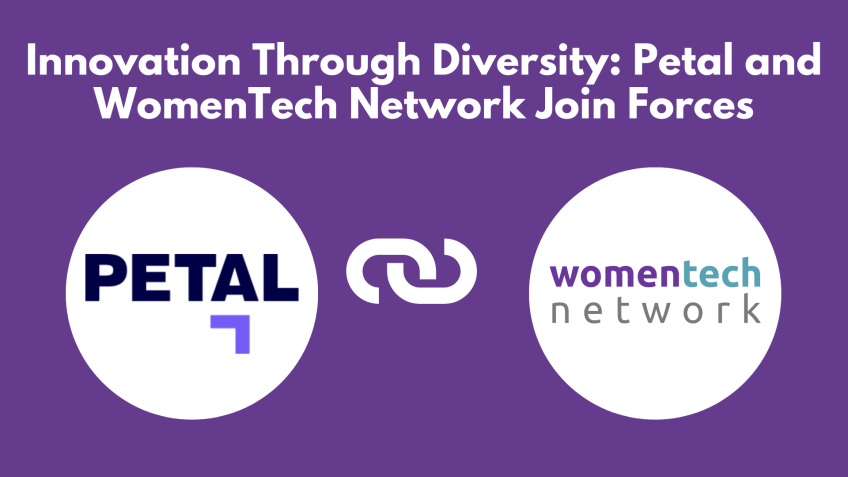Key tactics that Product Executives may adopt in 2023 to encourage a User Centric culture within their Product Development
Neelima Mangal
Co-Founder , Chief Global Head of Product Delivery ManagementWelcome to the Women in Tech 2023 Summit with Neima Mangal
Welcome everyone and thank you for joining me at the Women in Tech 2023 Summit. As an experienced tech evangelist, based out of beautiful Canada, I am truly excited to connect with each one of you today. Let's dive into my journey as well as some key strategies and tactics that business and technology leaders should adopt in 2023 to promote a user-centric culture.
About Me: A Woman in Tech Evangelist
Allow me to take a moment to introduce myself. My name is Neima Mangal. I am a proud mother, a dynamic leader, a dedicated mentor, and a fervent women in tech evangelist. For nearly 2.5 decades, I've worked in various leadership roles across North America, including rewarding experiences at Apple in California, AT&T in Atlanta, Georgia, Wells Fargo in San Francisco, ADP in Mississauga, Canada, and Scotia Bank in Toronto. All these experiences paved the way to the co-founding of Spectrum North and Women in Tech Evangelists - platforms designed to create a supportive, encouraging community for women in the tech industry.
Promoting Women Empowerment within Tech
With the aim of breaking gender barriers in the workforce, I initiated the ‘She and Hershey Wonder Women’ initiative, where women provide support and guidance to advance in their careers. Additionally, I host a podcast: "The Power of Women in the World of Tech", which aims to foster self-confidence and leadership skills among tech women.
Building a User-Centric Culture in Technology
In today's rapidly evolving tech industry, it's essential to build a user-centric culture. Drawing from my experiences in start-ups and top-tier companies, let's explore the role of innovative approaches in promoting a user-centric culture.
1. Design Thinking
The application of design thinking principles allows development teams to better understand their users' needs and provide fitting solutions.
2. Human-Centered Design (HCD)
This iterative process of research, prototyping, and user testing ensures the product meets user requirements effectively.
3. Lean User Research
This approach allows teams to fast-track user research and gather valuable feedback efficiently.
4. Agile Methodology
Adaptable and feedback-focused Agile methodologies help produce workable solutions keeping users at the center.
5. Scrum
Scrum, with its focus on quick iterations and adaptability, invites regular user and stakeholder feedback, aiding in the development of user-centric solutions.
Product Strategy vs. Go-to-Market Strategy
Understanding and harmonizing your product and go-to-market strategies can make a key difference in delivering value to customers. Let's decipher these strategies further:
- Product Strategy: The foundation of what you deliver to customers and how it brings value.
- Go-to-Market Strategy: Outlines the process, activities, and plan to bring a specific new product or service to market.
Succeeding as a Product Manager
Being a product manager in today's competitive global marketplace requires dedication, learning, and perseverance. Here are five effective strategies to succeed as a product manager:
- Understand the Product Strategy
- Know Your Business
- Use the Product
- Learn About Your Customers and Key Personas
- Collaborate with Sales, Customer Success, and Marketing Teams
Wrapping Up
Thank you for joining today's session. I hope that our conversation resonated with you, and that it helps inspire you to create a user-centric culture within your own teams. If you have any further questions or would like to connect, feel free to reach out via LinkedIn. Be sure to tune into my podcast, "The Power of Women in the World of Tech", listed in my LinkedIn group. Thanks again, and enjoy the rest of the conference!
Video Transcription
Hello, everyone. Happy Tuesday. A very good evening. Uh To everyone out here at today's summit. Thank you for joining me today. It's a great privilege uh to be here.I'm thrilled to be part of this 2023 women in Tech summit and really excited to be with each of you and share some of my experiences with all the talented colleagues out here. I'm excited to share my learnings and le learn from all the awesomeness represented here. Well, I'm speaking from beautiful Canada for those in different parts of the world. Cheers to each of you in today's session. I'll be covering a little bit about me. A small town, big dreams, how user centric culture can be promoted by a variety of innovative approaches. Um product strategy versus go to market strategy, how to succeed as a product manager and key tactics, technology and product executives should adopt in 2023 to encourage a user centric culture. OK. So, well, my journey as a tech evangelist was not planned uh or straightforward before we deep dive into today's topic, I would like to briefly introduce myself. My name is uh Neima Mangal based out of Toronto. I'm a women in tech Evan evangelist, volunteer, wife, mother, mentor, leader, and most importantly, a proud mom. I enjoy meeting new people, learning new things and culture.
I'm also a co-founder of Spectrum North and women in tech evangelists who has spent nearly 2.5 decades in the corporate world in various leadership roles across North America. East coast, west coast Silicon Valley, Canada, working with Fortune 500 companies like Apple in Cer California, a TNT in Atlanta, Georgia, Wells Fargo in San Francisco, California AD P in Mississauga, Canada, Scotia Bank in Toronto, Canada, where I got an opportunity to build high performing teams help business drive innovation with technology for complex apps, ran massive delivery engagements and adopt business models.
I'm very passionate about building and connecting technology to solve real world problems as well as growing a supportive community for women in tech. Lately, I've initiated S and Hershey Wonder Women initiative uh where women advancing women to provide women the means to network, advance in their careers, guidance, uh combat um uh imposter syndrome uh develop in their professions and close the gender gaps in the workforce.
Um I also host the podcast, The Power of Women in the world of tech that features thoughtful discussion about women in tech and women empowerment. As part of the series, I typically promote women empowerment by fostering self-confidence, leadership skills and motivate women to overcome the real life challenges they face within the corporate world today. Uh uh two decades in the corporate world, three continents, seven companies, amazing crew of team members and amazing mentors and dear mentees. If you're part of the summit today, I want to thank you. So that's me in a nutshell. OK. So let's dive into uh today's topic. Uh How user centric culture can be promoted via a variety of uh innovative approaches. Since technology develops, swiftly breakthroughs made today are usually all news by tomorrow. You produced a top notch product. Why then aren't sales good enough or or are negative reviews?
I would like to share my experience with both start up and topnotch industries today. There could be a variety of reasons why a topnotch product may be selling well and receiving negative reviews. Some possible reasons could include the poor marketing or advertising. Lack of a clear target market, high price point, poor distribution competition, negative reviews. Well, it's important to evaluate the potential reasons and make the necessary adjustments to improve sales and increase positive revenues. Uh According to my observations, the user centric culture has uh greatly influenced develop and teams dis decisions to consult. Users, conduct user research and work closely uh with groups like product management, customer access and user experience design to understand user needs and create solution that meets them.
Uh If business wants to stay competitive in today's world, they will need to offer products and services that are tailored to the needs and preferences um uh of the clients. Uh today's it leaders must definitely set a good example for engineering parts by encouraging user research feedback and empathy, opening doors for cross functional uh cooper operation and fostering transparency and open communication. Well, how user centric culture within development teams can be promoted via a variety of innovative approaches. I would like to share some of the examples. Number one design thinking, uh understanding user needs uh prototyping and testing solution. These techniques enables development teams to comprehend uh human demands more thoroughly and produce solution that satisfy those needs. Uh uh Second H CD which is Human Centered Design uh which is typically like research prototyping, user testing of ideas. Uh These are like all steps like an iterative process, development teams design uh solutions that are suited to the requirements of the user by utilizing H CD lien user research. The approach of lien user research enables teams to perform user research and collect feedback fast and affordably.
Uh four agile as we all know a methodology that promotes communication, adaptability and continuous feedback to provide workable solution iterations. Uh Scrum like with a strong emphasis on adaptability, quick iterations, promoting regular user and stakeholder feedback which can aid uh teams in developing user centered solution.
Well, the ideal uh ideal solution uh uh will depend on what is most important to your company over the next year or two and the risk you're ready to accept finally uh uh be clear about your goals, what you need to optimize for and what you can live with. Uh when it comes to the organizational design, it's also important to note that even a high quality product may not be a good fit for every consumer and that consumer preferences and buying habits can change over time. All right, moving on to the next slide, the product strategy versus go to market strategy, well, building and launching brilliant products requires that you understand and harmonize an internal focus, the build with an external focus, which is your launch uh to do this. Well, you need to know uh the why behind the work, the product strategy and the go to market strategy. Uh uh uh Let's start with a simple definition. Uh the product strategy as we know is a foundational. Uh It lays out what you will deliver to customers and how uh that will bring value. The product strategy informs the go market strategy and both should support the overall business goals. Where is the go to market strategy is typically more finite and will help capture how you will bring a specific uh new experience or series of new experience to market. Whether you work in product or marketing, it is essential uh to have a firm grasp of each strategy.
Take a look at some of the major differences between the two strategy. Why, who, what when when I say why the product strategy aligns the entire organization around a shared vision for how a new product or enhancement to an existing product will typically deliver value and help the company achieve its goals. The go to market strategy aligns uh um the rest of the organization around the activities such as product launch a new feature, uh expansion into a different market. It defines the approach you will take to translate technical functionality into messaging that will resonate with customers who.
Well, the product leaders said the product strategy and the product team drives it. Senior product marketing leaders said the go to market strategy and they are responsible for communicating product benefits both internally inside the company as well as externally to the customers.
What the product strategy typically includes the calling components such as customer research, product goals and initiatives, positioning, user personas, market analysis, competitor analysis. Whereas the go to market strategy typically includes the calling components such as your target goals and initiatives, your marketing goals and initiatives, positioning and messaging pricing, customer personas distribution channel. And last when the product strategy is ongoing, it is imperative that this strategy is defined early on since it governs all the work that the team will take on. Whereas the go to market strategy is more finite for planning purposes, the go to market strategy is defined well in advance of bringing a new product or services or experience to the market. So the product and go to market strategies live separately but should be in balance, both are required to deliver real value to customers. Ok. Uh Interesting how to succeed. Um Now, as a product manager, well as we know that the field of product management is one of the most competitive and desired in today's global marketplace. Therefore, keep in mind that you were hired because you are a hard worker, skilled and willing to learn.
It requires determination to try anything new. If you're a brand new product manager, you're certainly eager to start having an impact in your position. Um How uh your work has the ability to advance industry development and improve people lives. The first month is really crucial.
Get to know the company industry target market clients and your cross functional team, you will be working with. Now you your objective as both as an existing product manager, as well as a new product manager is to show your team and yourself that you can quickly create genuine value while assisting in the overall direction of the product development processes. Well, uh here are the five strategies I would like to discuss in today's session uh to be focused for being a successful product manager and creating a product that users will adore. Uh Number one, understand the product strategy. Well, uh you need to understand the strategy underlying the product in great detail. If you want to advance it, uh key inquiries to address like is your team's uh current product strategy part of their routine task. Uh what benefits do the products intended customer receive from it?
And who typically they are what alternative exist and what distinguishes your product? How has the product evolved and altered over the past 12 months? What performance indicators uh does the product team monitor? Uh second uh know your business well uh to further understand their objectives, uh schedule meetings with those in charge and with your marketing colleagues, your sales colleagues, your support colleagues, when I say support, like it could be a pro production, support your engineering colleagues, you may match uh product goals with what the rest of the business needs to accomplish by gathering insights all over from different stakeholders and organization, learn the product strategy, but also become familiar with uh your company's bigger business goals.
You uh key inquiries to address, I would say like what are the vision mission and strategy of the business? What are the objectives and how is success determined? What distinguishes your business most from your competitive? So do a thorough competitive analysis. What is going on in the business right now? That might affect the route the product takes. Third uh use the product. Uh This is very important. You must understand how the product functions and how it resolves actual consumer issues. Hands on experience is the only way to truly become an expert of the product that you are working or you are passionate about utilize the product as frequently as you can. Some key inquiries to address typically are. What issues does the product help clients with are the main benefits and features are clearly stated. What could be done to enhance the user experience? Where uh does the product fall short of fulfilling a demand or achieving a crucial goal? These are some of the key inquiries that you can typically uh cover fourth, learn about your customers and key personas. Well, to provide uh the finest uh solutions uh of your consumers, you may 1st develop empathy for them. Uh reading over any client personas, the team has already developed is a good place to start with. Review, both straightforward and intricate support tickets.
Um Don't shy seek for opportunities to interact with your key clients directly such as uh through empathy sessions in app community comments uh on uh tried to uh participate in sales and support calls. Uh Some of the key inquiries typically to address like what are the demographics of your users such as their job title, their age skills and location. What other uh problems do your clients or your customers have that the solution doesn't solve? What would please your clients more?
Uh Fifth, speak with the sales customer success and marketing division. Uh Stakeholders don't shy make and continuous effort to develop connections outside of your product team. Learn how each team contributes to the overall product development process by speaking with people in engineering, marketing, sales, customer success and all the other areas uh typical uh key inquiries to address like in engineering. Um What tools and development process do they use?
What drawbacks do the existing technology stack have? How do they calculate the quid size? What about collaborating with product team? Uh uh irritates them uh typical marketing uh uh strategy like what is the go to marketing strategy that you can approach with your marketing colleague?
What is the normal time frame for a marketing launch? What metrics do they track? What about collaborating with the product team that irritates them? Typical questions for sales colleague could be like how long is the sale cycle or average? Uh What is the procedure for making suggestion for asking for additional features on behalf of clients? What metrics do they track the customer success team makes sure that customer utilize the product to its full potential. How our customer success team members trained on new features and functionality.
Uh What metrics do they track and last but not the least prepared deeply. We are strongly prioritized now, work smarter succeeding as a new product manager requires the right tools and workflows, making tough decisions is a big part of your role as a product manager, pair that preparation with deep empathy, whether you're defining the product, product vision, collaborating with your engineering colleagues on a user story or presenting the product road map to the executives approach your work with the spirit of cur uh curiosity and reflection.
And I'm sure you will succeed as a finest uh product manager. Well, um uh that uh covers uh today's agenda. Uh Thank you for joining me today. I hope you have enjoyed the session, uh learned uh something and enjoyed the conversation as much as I did. Uh You may connect with me via linkedin if you have any questions. Uh If anyone is curious to listen uh to my podcast, The Power of Women in the world of tech, um feel free to join my linkedin group and I would be happy to connect with you. Well, thank you again uh for joining with me. It's a pleasure uh speaking with each of you. Um have a fantastic day and uh enjoy the great conference. Thank you.






